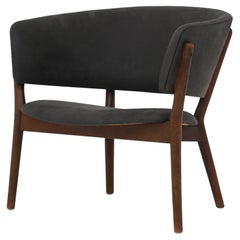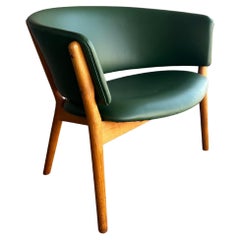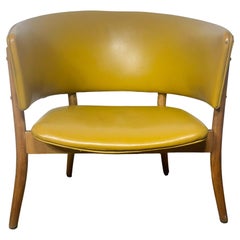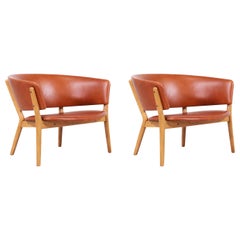Nanna Ditzel Nd83 Leather Lounge Chairs
Mid-20th Century Danish Scandinavian Modern Lounge Chairs
Beech
Vintage 1950s Danish Mid-Century Modern Lounge Chairs
Leather, Teak
Vintage 1950s Danish Modern Lounge Chairs
Leather, Oak
Vintage 1950s Danish Scandinavian Modern Lounge Chairs
Faux Leather, Oak
Recent Sales
Vintage 1950s Danish Mid-Century Modern Chairs
Leather
Vintage 1950s Danish Mid-Century Modern Lounge Chairs
Leather, Foam, Wood
Vintage 1960s Danish Lounge Chairs
Leather, Oak
Vintage 1950s Danish Mid-Century Modern Lounge Chairs
Leather, Oak, Upholstery
Mid-20th Century Swedish Scandinavian Modern Lounge Chairs
Leather, Oak
Vintage 1950s Swedish Scandinavian Modern Lounge Chairs
Leather
Late 20th Century Danish Scandinavian Modern Lounge Chairs
Leather, Oak
Vintage 1950s Danish Mid-Century Modern Armchairs
Beech, Leather
Vintage 1950s Danish Mid-Century Modern Armchairs
Fabric, Teak, Upholstery
People Also Browsed
Mid-20th Century Brazilian Mid-Century Modern Chairs
Wood
Vintage 1950s Danish Scandinavian Modern Lounge Chairs
Oak, Fabric
Vintage 1960s Italian Mid-Century Modern Chairs
Leather, Plywood
Mid-20th Century Danish Armchairs
Oak
Vintage 1960s Danish Scandinavian Modern Lounge Chairs
Upholstery, Oak
Vintage 1950s Danish Scandinavian Modern Lounge Chairs
Upholstery, Oak
Vintage 1950s Danish Scandinavian Modern Lounge Chairs
Fabric, Oak
Vintage 1950s Danish Mid-Century Modern Armchairs
Upholstery, Teak
Vintage 1940s Danish Scandinavian Modern Armchairs
Rosewood
Mid-20th Century Danish Mid-Century Modern Armchairs
Beech
Nanna Ditzel for sale on 1stDibs
Nanna Ditzel was the most versatile and creative female designer that Denmark produced in the 20th century. Ditzel brought her talents to bear on a staggering array of forms — she designed furniture, jewelry, tableware and textiles; and she shaped her pieces using an equally astonishing variety of materials, from wood and wicker to silver, ceramics and fiberglass.
Born in Copenhagen, she trained as a cabinetmaker at the Royal Academy's furniture school — overseen by the great craftsman of the day, Kaare Klint — and graduated in 1943. Ditzel’s early work adhered to the classic Danish modernist tenets of simplicity, comfort and quality, and her armchairs, with their softly curved backrests are much in the spirit of Hans Wegner. Ditzel’s signature piece of that time is her Ring chair. Designed along with her husband, Jørgen Ditzel, a fabric maker, the chair has a semicircular padded armrest that seems to embrace the sitter. Ditzel began designing in wicker and in 1959 produced the Hanging chair. The piece, suspended from the ceiling by a chain, became a favorite for fashion shoots and may be as iconic of the 1960s as Eero Aarnio’s plastic Ball chair of 1963.
In 1956, Ditzel began designing for the Danish silverware firm Georg Jensen. In an association that lasted some 40 years, Ditzel would create organically shaped jewelry, barware, ceramic tableware and even tablecloths. Like her fellow Dane Verner Panton, Ditzel was not afraid to embrace industrial materials, and she began designing fiberglass chairs in the mid-1960s. Some of her most flamboyant work came toward the end of her career, in pieces such as 1989’s Bench for Two, with its shocking Op-art finish, or the Trinidad chair of 1992, with it’s sunburst-like, cut-though backs. Such feats of creativity were a fitting coda to one of the most imaginative, prolific and remarkable women of modern design.
Finding the Right Lounge-chairs for You
While this specific seating is known to all for its comfort and familiar form, the history of how your favorite antique or vintage lounge chair came to be is slightly more ambiguous.
Although there are rare armchairs dating back as far as the 17th century, some believe that the origins of the first official “lounge chair” are tied to Hungarian modernist designer-architect Marcel Breuer. Sure, Breuer wasn’t exactly reinventing the wheel when he introduced the Wassily lounge chair in 1925, but his seat was indeed revolutionary for its integration of bent tubular steel.
Officially, a lounge chair is simply defined as a “comfortable armchair,” which allows for the shape and material of the furnishings to be extremely diverse. Whether or not chaise longues make the cut for this category is a matter of frequent debate.
The Eames lounge chair, on the other hand, has come to define somewhat of a universal perception of what a lounge chair can be. Introduced in 1956, the Eames lounger (and its partner in cozy, the ottoman) quickly became staples in television shows, prestigious office buildings and sumptuous living rooms. Venerable American mid-century modern designers Charles and Ray Eames intended for it to be the peak of luxury, which they knew meant taking furniture to the next level of style and comfort. Their chair inspired many modern interpretations of the lounge — as well as numerous copies.
On 1stDibs, find a broad range of unique lounge chairs that includes everything from antique Victorian-era seating to vintage mid-century modern lounge chairs by craftspersons such as Hans Wegner to contemporary choices from today’s innovative designers.





